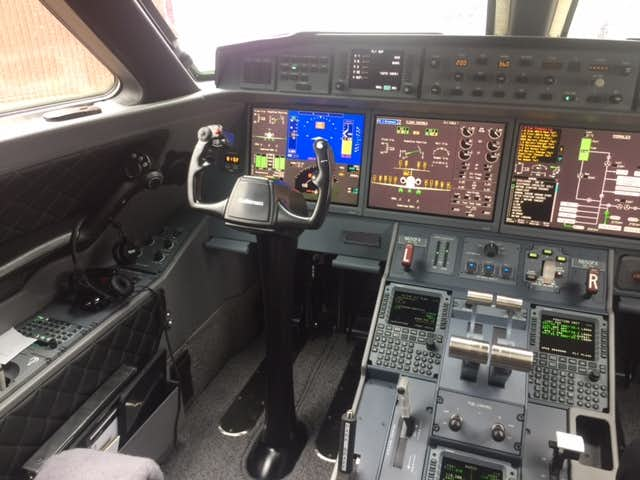
When shopping for private jet charter, older jets are often priced lower than newer jets. Some Jet Card Membership programs offer lower rates for older model aircraft. Are you giving up anything in safety?

Will you have fewer amenities? Does it matter when the airplane was last refurbished? PrivateFly CEO and former RAF pilot Adam Twidell who still flies business jets provide Private Jet Card Comparisons readers with his viewpoint in this guest column.
By Adam Twidell
While you might like to change your car every year or so, doing the same with a private jet is not such a practical option! But the good news is you don’t have to. Newer is not (always) better when it comes to aircraft – once you weigh everything up.
Unlike many cars, commercial aircraft are built to last – they have to be, costing as much as they do. In fact, in the commercial airline sector, it’s commonplace for an aircraft to remain in regular service for up to 30 years. The average age of British Airways’ 747 fleet is 20 years+. However, the average age of jets chartered by PrivateFly customers in 2017 was just 6 years old.
When aircraft go out of service, it’s usually because they have become less efficient and uneconomical to run, rather than because they’re unsafe. Inspection and maintenance criteria are very strict in aviation and a well-maintained aircraft remains very safe over a long period of time.
So choosing which age of aircraft to charter is actually a matter of preference and priorities, rather than safety. Here’s how to weigh it all up.
A brand new aircraft packs a powerful punch in terms of wow factor in the cabin. Developments in cabin systems and interior design mean new aircraft are getting more and more comfortable – and stylish. The newest models come with advanced ergonomic seating, lower cabin altitude and enhanced onboard technology options.
But an aircraft’s date of refurbishment is just as important here as its date of manufacture. So it’s essential to consider both, when weighing up charter options. Depreciation on new aircraft values is fairly dramatic and so many savvy aircraft owners are turning to nearly new instead, and overhauling them inside. A 3-to-5-year-old aircraft can come in at under 50% of the original purchase price and they can spend less than the other 50% at a completion center such as Duncan Aviation, ending up with a new (and bespoke) finish.
So a refurbished aircraft can feel totally fresh, including a new carpet, re-covered seats (or all new seating), new paneling, and upgraded bathrooms or galleys in larger aircraft. Technology in the cabin and cockpit technology systems can also be upgraded, including adding WiFi (now commonplace in many refurbished aircraft in the US, less so in Europe). So some charter customers prefer to choose a 10-year-old aircraft that has a ‘box fresh’ interior, rather than a three-year-old one, that hasn’t yet been refurbished. This usually comes at a lower charter price too.
Nextant’s approach takes this even further: Strip an aircraft right back to its original airframe, and then add new engines, avionics and cabin. This creates a ‘new’, modern aircraft, but with lower operating costs than a clean sheet new rival. The Nextant 400XT/XTi is their most popular charter aircraft – a re-engineered Hawker/ Beechjet 400A. And there’s the more recently introduced G90XT, a re-engineered King Air turboprop.
Newer aircraft generally perform more efficiently than older ones – in terms of range, speed and fuel-efficiency.
These are the headline differentiators for aircraft – and the manufacturers know this very well. So a new version of most aircraft is built to fly a bit further and faster than its predecessor. Take Bombardier’s Global 7000 for example. It will extend the range of their previous Globals when it launches next year, so it can compete head-to-head with the Gulfstream G650ER, which has a range of 7,500nm.
Fuel-efficiency is another area where newer aircraft outperform their older counterparts, thanks to improved engine and wing design. And less fuel burn does mean lower operational costs.
But the aftermarket is addressing some of this, with add-ons such as hush kits and winglets, that can dramatically improve the performance of older aircraft. For example, active winglets can be fitted to the popular Citation CJ jet series, – a 2012 model equipped with these can then perform well beyond a 2017 stock model.
However many charter clients aren’t so concerned with these boundary-pushing factors. Lower fuel costs, or a faster journey time are great – but may not be worth the price premium of choosing a newer model over an older one. And for most clients, an ultra long range won’t be necessary.
Newer aircraft almost always come at a higher charter price than older ones – as usually the aircraft operator will set their hourly rate to reflect the aircraft’s age. So if all other things are equal you can expect to pay several thousand dollars less to charter an older aircraft, than a newer one of the same type.
We recently presented a client traveling in Europe with the option of two Embraer Legacy 600s for a 7-night return from London to Chambery in France. The 2007 aircraft was 16% less expensive to charter: €36,180, versus €43,200 for the 2014 jet. And as the 2007 aircraft had been refurbished in 2013, its interior was a close match to the 2014 plane.
Of course, some clients simply prefer to fly on a new aircraft – and are happy to pay a premium for this. And this does vary regionally. Generally speaking, our clients in the US (who are often very informed about the market) are less concerned about flying on a new aircraft, than those in Europe or the Middle East. And the aftermarket is more developed there as a result.